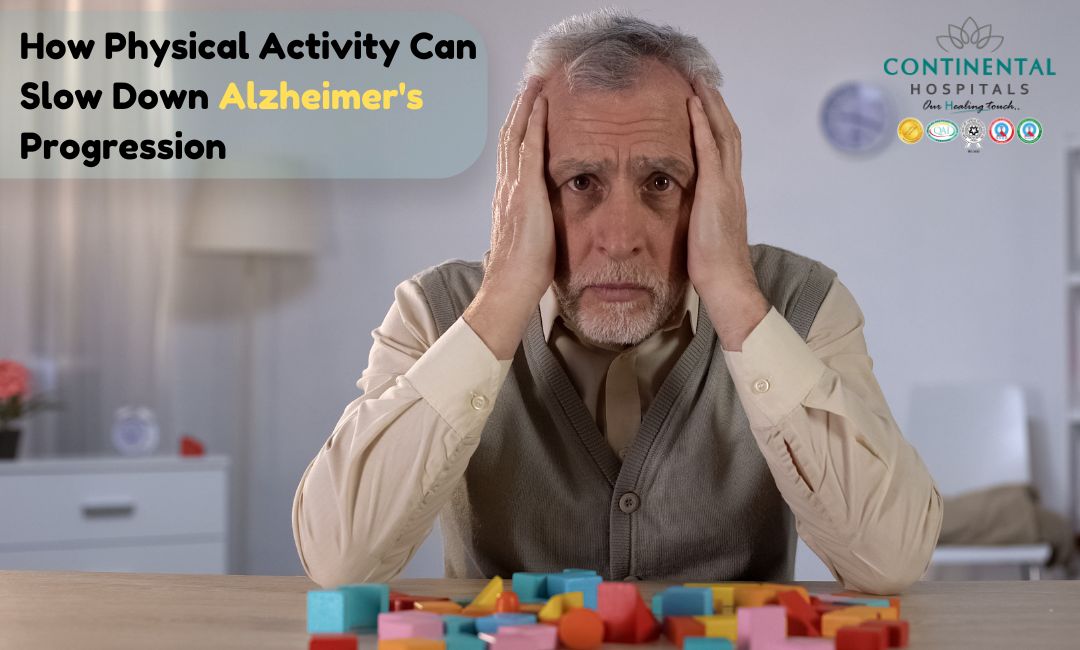Alzheimer's disease is a complex condition that affects millions of people worldwide. It's a type of dementia that leads to memory loss, confusion, and changes in behavior. While there is currently no cure for Alzheimer's, research shows that certain lifestyle changes can help slow its progression. One of the most effective strategies is engaging in regular physical activity.
In this blog, we will explore how physical activity can help those living with Alzheimer’s disease and why incorporating exercise into daily life is essential for brain health.
Understanding Alzheimer’s Disease
Before diving into the benefits of physical activity, it’s essential to understand what Alzheimer’s disease is. Alzheimer’s is characterized by the buildup of proteins in the brain that form plaques and tangles, disrupting communication between brain cells. Over time, this leads to cognitive decline, impacting daily activities and overall quality of life.
While genetics and age are significant risk factors, lifestyle choices, including physical activity, can play a vital role in influencing the onset and progression of the disease.
Experiencing Alzheimer’s symptoms? Consult our best neurologist at Continental Hospital is available to provide you with the support you need.
The Connection Between Physical Activity and Brain Health
Research has consistently shown a strong link between physical activity and brain health. Regular exercise increases blood flow to the brain, providing it with oxygen and essential nutrients. This process helps maintain and improve brain function, which is crucial for those at risk of or living with Alzheimer’s.
Here are several ways physical activity positively impacts brain health:
Improves Blood Circulation: Exercise enhances blood circulation, which delivers more oxygen and nutrients to brain cells. Improved blood flow can help keep brain cells healthy and functioning well.
Reduces Inflammation: Regular physical activity has anti-inflammatory effects that can help protect the brain from damage. Inflammation is believed to play a role in the progression of Alzheimer’s disease, so reducing it can be beneficial.
Promotes Neurogenesis: Exercise stimulates the production of brain-derived neurotrophic factor (BDNF), a protein that encourages the growth of new brain cells. This process, known as neurogenesis, is essential for learning and memory.
Enhances Mood and Reduces Stress: Physical activity releases endorphins, the body's natural mood lifters. For people with Alzheimer's, maintaining a positive mood and reducing stress can lead to better cognitive function.
Improves Sleep Quality: Regular exercise can help improve sleep patterns, which are often disrupted in individuals with Alzheimer's. Better sleep leads to improved brain health and cognitive performance.
Types of Physical Activities Beneficial for Alzheimer’s
Incorporating different types of physical activities can have varying benefits for individuals with Alzheimer's. Here are some suggestions:
Aerobic Exercise: Activities like walking, swimming, or cycling increase heart rate and improve cardiovascular health. Aim for at least 150 minutes of moderate aerobic exercise each week.
Strength Training: Resistance exercises, such as lifting weights or using resistance bands, can help build muscle strength and improve balance. Aim for two sessions per week, focusing on all major muscle groups.
Flexibility and Balance Exercises: Practices like yoga or tai chi improve flexibility, balance, and coordination, reducing the risk of falls. These exercises can also promote relaxation and mental clarity.
Social Activities: Group exercises, such as dance classes or community fitness programs, not only promote physical health but also provide social interaction, which is crucial for emotional well-being.
Mind-Body Exercises: Activities that combine mental and physical engagement, like dancing or martial arts, can provide cognitive benefits alongside physical ones.
Getting Started with Physical Activity
If you or a loved one has been diagnosed with Alzheimer’s, starting a physical activity routine can be challenging but rewarding. Here are some tips to help you get started:
Consult with Healthcare Providers: Always consult a healthcare professional before starting any new exercise program, especially for individuals with Alzheimer's. They can provide guidance on safe and appropriate activities.
Set Realistic Goals: Begin with small, achievable goals. This could be a short daily walk or a few minutes of stretching. Gradually increase the duration and intensity of the exercises.
Create a Routine: Establish a regular exercise schedule to make physical activity a part of daily life. Consistency is key to reaping the benefits.
Make It Enjoyable: Choose activities that are fun and engaging. This could include dancing to favorite music, gardening, or joining a local walking group.
Involve Family and Friends: Encourage loved ones to join in on physical activities. Exercising together can provide motivation and support while also strengthening social bonds.
Monitor Progress: Keep track of physical activity levels and any improvements in mood, sleep, or cognitive function. This can help maintain motivation and encourage adherence to the exercise routine.
The Importance of Nutrition
While physical activity plays a significant role in brain health, it should be combined with a balanced diet for optimal results. A diet rich in fruits, vegetables, whole grains, lean proteins, and healthy fats can support overall brain function. Foods high in antioxidants, omega-3 fatty acids, and vitamins can help reduce inflammation and promote cognitive health.
Conclusion
Incorporating physical activity into daily routines is a powerful way to support brain health and slow down the progression of Alzheimer’s disease. Regular exercise can lead to improved mood, better sleep, and enhanced cognitive function, all of which contribute to a better quality of life.
If you’re experiencing symptoms of Alzheimer’s, reach out to our best neurologist at Continental Hospital for expert advice.
Related Blog Articles-
.webp)














